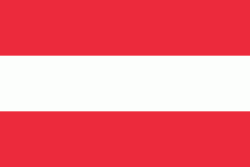Schärding
Bavarian name: Scharing) is a town in northern Austrian state of Upper Austria, the capital of the district of the same name, and a major port on the Inn River. Historically, it was owned by the Wittelsbach family, which reflects in the town's architecture.
As of 1 January 2021, it had a population of 5,216.
The Bavarian family Wittelsbach owned the town until 1779. Eyewitness Travel Austria guide describes Schärding's best feature is its central square, the north end of which sits the Silberzeile row of gabled-roof houses. Other features include the large Church of St. George. The castle is gone but in its gateway there is a local museum with religious sculptures and those by Johann Peter Schwanthaler.
As of 1 January 2021, it had a population of 5,216.
The Bavarian family Wittelsbach owned the town until 1779. Eyewitness Travel Austria guide describes Schärding's best feature is its central square, the north end of which sits the Silberzeile row of gabled-roof houses. Other features include the large Church of St. George. The castle is gone but in its gateway there is a local museum with religious sculptures and those by Johann Peter Schwanthaler.
Map - Schärding
Map
Country - Austria
 |
 |
| Flag of Austria | |
Austria emerged from the remnants of the Eastern and Hungarian March at the end of the first millennium. Originally a margraviate of Bavaria, it developed into a duchy of the Holy Roman Empire in 1156 and was later made an archduchy in 1453. In the 16th century, Vienna began serving as the empire's administrative capital and Austria thus became the heartland of the Habsburg monarchy. After the dissolution of the Holy Roman Empire in 1806, Austria established its own empire, which became a great power and the dominant member of the German Confederation. The empire's defeat in the Austro-Prussian War of 1866 led to the end of the Confederation and paved the way for the establishment of Austria-Hungary a year later.
Currency / Language
| ISO | Currency | Symbol | Significant figures |
|---|---|---|---|
| EUR | Euro | € | 2 |
| ISO | Language |
|---|---|
| HR | Croatian language |
| DE | German language |
| HU | Hungarian language |
| SL | Slovene language |















